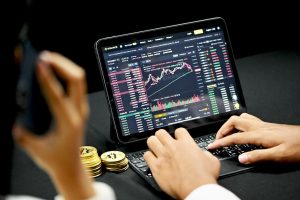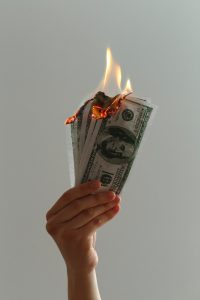Forex currency trading, also known as foreign exchange or FX trading, is the buying and selling of currencies on the foreign exchange market. The forex market is the largest and most liquid financial market in the world, with an average daily trading volume of $5.3 trillion.
The forex market operates 24 hours a day, five days a week, and is accessible from anywhere in the world. It is a decentralized market, meaning there is no central exchange where all trades are conducted. Instead, forex trading is conducted over the counter (OTC) through a network of banks, brokers, and other financial institutions.
The main participants in the forex market are banks, corporations, governments, and individual traders. Banks and corporations use the forex market to facilitate international trade and to hedge against currency risk. Governments use the forex market to manage their foreign reserves and to intervene in the currency markets to stabilize their currencies. Individual traders, also known as retail traders, trade currencies for profit.
Forex trading involves buying one currency and selling another currency at the same time, with the aim of making a profit from the difference in exchange rates. Currency pairs are traded on the forex market, with the most popular pairs being EUR/USD, USD/JPY, and GBP/USD.
The exchange rate of a currency pair is determined by the supply and demand for the currencies in the pair. If there is more demand for one currency in the pair, its value will increase relative to the other currency in the pair. Conversely, if there is more supply of one currency in the pair, its value will decrease relative to the other currency in the pair.
Forex traders use a variety of tools and techniques to analyze the market and make trading decisions. These include technical analysis, which involves studying charts and using mathematical indicators to identify trends and patterns in the market; fundamental analysis, which involves analyzing economic and political factors that can affect currency prices; and sentiment analysis, which involves gauging the mood and sentiment of other traders in the market.
Traders can use different types of orders to enter and exit trades, including market orders, limit orders, stop orders, and trailing stop orders. Market orders are executed at the current market price, while limit orders are executed at a specified price or better. Stop orders are used to limit losses by automatically closing a trade when a certain price is reached. Trailing stop orders are similar to stop orders, but they are adjusted as the market moves in the trader’s favor.
Forex trading carries a high level of risk and is not suitable for all investors. Traders should have a solid understanding of the market and the risks involved before participating in forex trading. It is also important to have a trading plan and to manage risk by using stop-loss orders and proper position sizing.
In conclusion, forex currency trading is the buying and selling of currencies on the foreign exchange market. The forex market is the largest and most liquid financial market in the world, with an average daily trading volume of $5.3 trillion. Forex trading involves buying one currency and selling another currency at the same time, with the aim of making a profit from the difference in exchange rates. Traders use a variety of tools and techniques to analyze the market and make trading decisions, and different types of orders to enter and exit trades. Forex trading carries a high level of risk and is not suitable for all investors.






